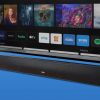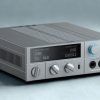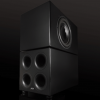By Shelly Palmer (bio), Managing Director, Advanced Media Ventures Group, LLC
If you attended the 2007 International Consumer Electronics Show (CES) expecting to see the new, new thing — you probably came away disappointed. For the untrained eye, the show looked like it was filled with iPod accessories, very nice flat screen TVs, very cool GPS and automotive audio/video stuff and a few more iPod accessories.
However, if you knew what you were looking at, there was much, much more.
First and foremost is the extraordinary commitment that companies like Sony, Pioneer, LG and Samsung have made to "over the top" (OTT) applications. What is OTT? A television set (usually a flat-panel) that is connected to the public Internet as well as a private content distribution network (CDN) like a cable, satellite or telephone company. It's called OTT because the "data" part of the "video, voice & data" triple play is considered an application that rides "on top" of the existing infrastructure.
Some people call it "cable bypass," other call it "convergence," no matter what you call it, it is certain to delight some consumers, madden others and truly piss-off the Internet service providers (like cable and telephone companies.)
Sony was showing a Bravia flat-panel display with an (as yet unpriced) Ethernet sidecar. This little box is surely Sony's answer to AppleTV, but its value proposition is clear: Sony now owns all of the screen's real estate when you turn on your new Internet-enabled, Bravia display. And, more importantly, you have the ability to browse the public Internet (including your favorite peer-assisted streaming video sites). Because the television is connected to your local area network (LAN) and has Internet access, you can use it to display all kinds of content from all kinds of sources (including other computers in your own home).
For the most part, these are not computer/television converged devices, they are true HDTV sets with extensive built-in Internet connectivity. That's good news for some and a nightmare for others. How happy is Comcast going to be when you turn on your flat screen TV and it wakes up on a webpage or RSS/widget-based GUI from the CE manufacturer? The cable operators have owned this real estate for decades — they will not own it much longer. What happens to a "walled garden" business model when consumers can get content over the public Internet (OTT) for free?
The second most interesting thing about this year's CES was "scale." Not the size of the show, the focus of the attendees and exhibitors on content, interoperability and connectivity. The CE business has been paying lip service to these concepts for quite a while, this year the whole show seemed to be about getting content delivered to consumers any way imaginable.
To that end, Microsoft was showing dozens of applications of its new Vista operating system. For Mac users, Vista's feature set will seem paltry and ordinary. But, for the 95 percent of computer users on the planet who use Windows, it will enable them to participate in the new world of "self expression." The content creation tools that Microsoft has built into the operating system are, quite simply, going to change the world.
In truth, Microsoft hasn't got a clue about the television business or emotional communication. Every aspect of the booth was showing features for geeks (as opposed to benefits for consumers). It was like looking at the back of the television set. But … let's remember, Microsoft doesn't use their products … people do. And, believe me, they will. Vista coupled with some of the third-party software demonstrated in the partner booths is awesome.
And, as if that were not enough, even casual viewers can now see the benefits of the Windows Media Extender and XBox Extender products. The Microsoft media ecosystem has arrived!
Then there was the overwhelming amount of mobile devices on display. If you can imagine it, someone has built it. There were more "concept devices" on the floor then production models. And, that held true for almost every product line.
The top five take-aways for Technology, Media & Entertainment executives regarding CES:
- The CE business seems firmly committed to using the public Internet as a value-added profit center. OTT applications will be found on every type of display and playback technology.
- There is an unbelievable amount of competition in the marketplace and downward price pressure is extreme. For example: LG's 70" HDTV set was $1,000 per inch last year. This year the MSRP is $14,500. You can almost buy it sight unseen.
- Microsoft has now completed and released the software they need to become a formidable ecosystem. This means others will be forced to partner, create alternatives or perish.
- The CE industry (as a whole) does not understand the first thing about how consumers watch television, consume entertainment, respond to advertising or any of the associated business models. But they are going to figure it out pretty soon. Money is being thrown at alternative distribution methodologies and CE is a very probable landing place for that money.
- In the post-Grokster world, the CE industry can make any technology that does anything (regardless of how consumers might use it to usurp content owners rights). After all, technology doesn't kill business models — people do.
About the Author: Shelly Palmer is Managing Director of Advanced Media Ventures Group LLC and the author of Television Disrupted: The Transition from Network to Networked TV (2006, Focal Press). Shelly is also the 1st vice president of the National Academy of Television Arts & Sciences, NY and Chairman of the Advanced Media Committee of the Emmy Awards. You can read Shelly's blog at http://www.emmyadvancedmedia.com. Shelly can be reached at shelly@palmer.net.





























